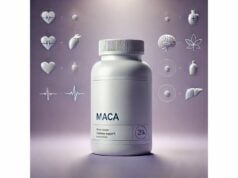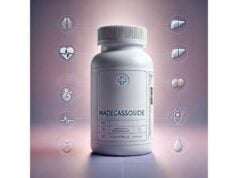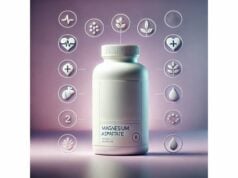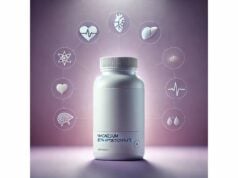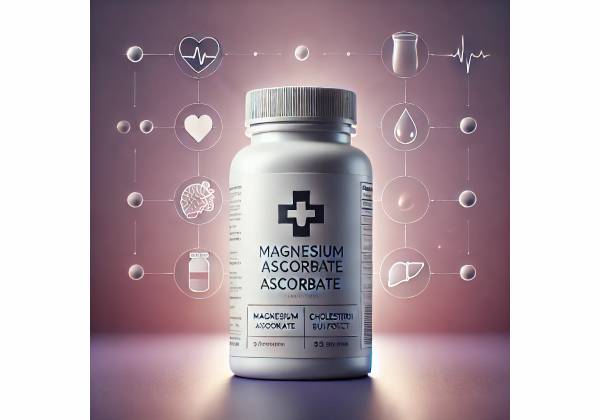
Magnesium ascorbate is a “buffered” form of vitamin C bound to magnesium. In practice, that means you get two essentials in one: ascorbate to support collagen formation, antioxidant defenses, and iron absorption; and magnesium to aid muscle and nerve function, energy metabolism, and a steady heart rhythm. Many people choose magnesium ascorbate because it’s gentler on the stomach than plain ascorbic acid and because one serving can meaningfully contribute to daily magnesium needs. Still, it isn’t a cure-all. The form of magnesium matters for absorption, total dose matters for tolerance, and certain health conditions call for extra caution. This guide translates the science into practical decisions—who benefits, how much to take, what to look for on labels, when to avoid it, and how it compares with other options—so you can use magnesium ascorbate confidently and safely.
Quick Overview
- Buffered vitamin C that may be easier on the stomach while also supplying elemental magnesium.
- Typical daily use: 200–1,000 mg vitamin C from magnesium ascorbate (often 20–100 mg elemental magnesium per serving), not exceeding 2,000 mg vitamin C or 350 mg supplemental magnesium daily.
- Main cautions: high doses can cause diarrhea; keep supplemental magnesium ≤350 mg/day; consider kidney stone risk (especially in men) at high vitamin C intakes.
- Avoid or use only with medical guidance if you have significant kidney disease, hemochromatosis/iron overload, or take tetracycline/quinolone antibiotics or bisphosphonates.
Table of Contents
- What is magnesium ascorbate?
- What benefits can you expect?
- How to take it: dosage and timing
- Choosing a quality product and avoiding mistakes
- Who should avoid it and side effects
- What the evidence says today
What is magnesium ascorbate?
Magnesium ascorbate is a mineral salt formed when vitamin C (ascorbic acid) is neutralized with magnesium. Because it’s a salt, the powder has a near-neutral pH compared with the acidic profile of plain ascorbic acid. That “buffered” character is why many people who experience stomach irritation with standard vitamin C do better with magnesium ascorbate. You’ll also see it labeled as “vitamin C (as magnesium ascorbate).” On a supplement facts panel, most responsible brands will list both the amount of vitamin C and the amount of elemental magnesium per serving.
Functionally, magnesium ascorbate does two things:
- It supplies vitamin C, a water-soluble vitamin involved in collagen synthesis (skin, tendons, ligaments, vascular walls), carnitine production (energy), neurotransmitter formation, antioxidant recycling (notably vitamin E), and immune defense.
- It contributes elemental magnesium, a cofactor in hundreds of enzymatic reactions that influence energy production (ATP), insulin action, neuromuscular signaling, and heart rhythm stability.
A key point about forms: once absorbed, vitamin C is vitamin C—blood levels reflect total intake rather than the salt used. Mineral ascorbates, liposomal formats, and plain ascorbic acid are broadly similar for systemic vitamin C status when taken at comparable doses. Where users tend to notice a difference is gastrointestinal comfort. Buffered salts (such as magnesium ascorbate) are less acidic and can be easier to tolerate at higher doses.
The magnesium portion varies by product. Many “buffered C” powders deliver several hundred milligrams of vitamin C with a relatively small amount of magnesium (for example, 50–100 mg). That can help you close the gap toward the adult Recommended Dietary Allowance (RDA) for magnesium (roughly 310–420 mg/day depending on age and sex) without pushing past the tolerable upper limit for supplemental magnesium (350 mg/day for adults). If you already take a separate magnesium supplement or use magnesium-containing antacids or laxatives, add up the totals so you stay under that supplemental limit unless your clinician directs otherwise.
Finally, remember that vitamin C is water-soluble and not stored in large amounts. Smaller, repeated doses (for example, 200–500 mg two or three times daily) often maintain steadier blood levels than a single large dose, and they may reduce the chance of loose stools. That dosing pattern fits well with magnesium ascorbate’s gentle profile and makes it practical for daily use.
What benefits can you expect?
People choose magnesium ascorbate for two reasons: to meet vitamin C goals comfortably and to contribute useful magnesium. When used within recommended ranges, the most realistic outcomes are steady nutritional support and fewer stomach complaints compared with unbuffered, high-acid vitamin C tablets.
Digestive tolerance at useful doses
If regular ascorbic acid upsets your stomach, a buffered form such as magnesium ascorbate is often a smoother ride—especially at 500–1,000 mg per day of vitamin C. That can matter during travel, heavy training, or the winter months when many people like slightly higher maintenance intakes. Although individual responses vary, users frequently report less heartburn and fewer cramps with buffered C. Because tolerance depends on total osmotic load in the gut, splitting the dose across the day further reduces the chance of diarrhea.
Everyday immune and skin support
Vitamin C supports normal immune function and helps maintain epithelial barriers (skin and mucous membranes). Regular daily intake—rather than “rescue” megadoses—aligns best with the data on shortening the duration of common colds in typical adults by a small margin and supporting wound healing alongside adequate protein and zinc. Collagen synthesis also benefits from consistent vitamin C availability, which is why it’s a mainstay in skin and joint formulations.
A meaningful magnesium bump
Many adults fall short of magnesium intakes from food. Magnesium ascorbate can contribute 20–100 mg elemental magnesium per serving depending on the formula, which helps move you toward daily targets. Adding that to magnesium-rich foods—leafy greens, nuts, seeds, legumes, whole grains—can improve the odds you’ll meet the RDA. Because the supplemental magnesium limit is 350 mg/day for adults (not counting food), buffered C products are a convenient way to “top off” without overshooting.
Iron absorption nuance
Vitamin C improves non-heme iron absorption in meals. In actual supplementation for iron deficiency anemia, modern randomized trials show oral iron alone usually works as well as iron plus vitamin C. Practically, if you’re already taking magnesium ascorbate with meals, you may gain a small absorption boost for plant-based iron foods, but most people treating iron deficiency will do fine without pairing iron and vitamin C pills every time. More important are dose timing (often alternate-day iron) and tolerability.
Exercise and recovery
Both vitamin C and magnesium participate in energy metabolism. Meeting daily needs—not megadosing—supports fatigue resistance and normal muscle function. Some athletes prefer buffered C to minimize GI distress around training while still covering vitamin C basics and adding a modest magnesium assist.
What not to expect
Magnesium ascorbate is not a shortcut to high serum magnesium or a cure for cramps, anxiety, or insomnia. Likewise, it’s not proven to prevent colds or major chronic diseases by itself. Think of it as a well-tolerated way to hit daily vitamin C targets while contributing to magnesium sufficiency—helpful, but not magical.
How to take it: dosage and timing
Daily ranges that work for most adults
- Vitamin C from magnesium ascorbate: 200–1,000 mg/day for general use. Many settle around 250–500 mg/day.
- Upper limit for vitamin C: 2,000 mg/day for adults from all sources (supplements plus fortified foods).
- Elemental magnesium from supplements (all forms): aim for a combined supplemental total ≤350 mg/day unless your clinician advises otherwise; the RDA (310–420 mg/day) includes food plus supplements.
Label reading essentials
Buffered C powders and capsules usually list “Vitamin C (as magnesium ascorbate)” and “Magnesium (as magnesium ascorbate).” Use those two lines to plan your day. A typical serving might provide, for example, 500–1,000 mg vitamin C and 50–100 mg magnesium. If you also take a multivitamin or a standalone magnesium product, add them up to protect your stomach and stay within the supplemental magnesium limit.
Best timing
- With food: Taking magnesium ascorbate with meals often improves comfort and is convenient if you want to support non-heme iron absorption from plant-based meals.
- Split doses: To maintain steadier vitamin C levels and reduce GI risk, consider 250–500 mg once or twice daily rather than a single gram at once.
- Training days: If you’re sensitive to GI upset around workouts, take your dose away from high-intensity sessions.
Special situations
- During iron therapy: Most adults taking oral iron don’t need to add separate vitamin C. If you and your clinician prefer to include it, 200 mg vitamin C alongside the iron dose is common.
- Sensitive stomach: Start at 250 mg/day of vitamin C as magnesium ascorbate with a meal for 3–4 days, then increase if needed.
- Vegetarian or low-magnesium diet: Choosing a magnesium ascorbate product that provides at least 75–100 mg magnesium per serving can help close the gap toward daily magnesium goals.
What about kids, pregnancy, and older adults?
For anyone outside typical adult ranges, personalize by age and circumstance. Children, teens, and pregnant or lactating people have different vitamin C RDAs and magnesium RDAs. The tolerable upper limit for supplemental magnesium is lower in children and 350 mg/day for pregnant and breastfeeding adults as well. When in doubt, match the serving to the lowest applicable limit in your group and discuss with your healthcare professional.
Stacking with other nutrients
Common pairings include zinc (short courses), collagen peptides (for skin and joint support), and quercetin (seasonal formulas). If your multivitamin already contains 90–120 mg vitamin C, you may only need a small additional dose of magnesium ascorbate to reach your target.
How long to use it?
Magnesium ascorbate can be used long-term at modest doses. If you prefer higher vitamin C intakes (for example, 1,000 mg/day), consider cycling down during periods with fewer stressors, and keep an eye on gastrointestinal comfort and kidney stone risk if you’re a man with a history of calcium oxalate stones.
Choosing a quality product and avoiding mistakes
What to look for on the label
- Clear amounts for both nutrients. The panel should list vitamin C (mg) and magnesium (mg) per serving, not just “magnesium ascorbate 1,000 mg.” That’s because 1,000 mg of the compound does not equal 1,000 mg of vitamin C or 1,000 mg of magnesium.
- Elemental magnesium stated. Trust brands that state “Magnesium (as magnesium ascorbate)” with the elemental amount.
- Third-party testing. Seals from reputable programs (for example, independent labs that verify identity and purity) increase confidence.
- Additives profile. Powders often add flavoring and sweeteners; capsules may include simple excipients like cellulose. Choose the simplest formula you tolerate well.
Bioavailability perspective
Magnesium salts differ in solubility and laxative potential. Many “organic” salts (citrate, glycinate, ascorbate, malate) are more soluble than oxide and may be better tolerated gram-for-gram. In a buffered C product, the magnesium dose is typically modest; that helps reduce laxative effects while still supporting magnesium intake. Since vitamin C absorption isn’t strongly dependent on the salt used, prioritize comfort, dose accuracy, and value.
Common mistakes to avoid
- Ignoring totals. If you take magnesium ascorbate and a separate magnesium supplement, it’s easy to overshoot the 350 mg/day supplemental limit. Add the elemental magnesium from all supplements and magnesium-containing antacids/laxatives.
- Chasing mega-doses. Going far above 2,000 mg/day vitamin C can increase the risk of diarrhea. In men with a history of calcium oxalate stones, very high vitamin C intakes are associated with greater stone risk.
- Poor timing with medications. Magnesium competes with the absorption of certain drugs. Separate magnesium ascorbate by at least two hours before or 4–6 hours after tetracyclines/quinolones and by two hours from oral bisphosphonates, unless your clinician provides a different plan.
- Confusing compound weight with nutrient weight. Marketing sometimes highlights “1,000 mg magnesium ascorbate,” which can mislead buyers. Verify the actual mg of vitamin C and elemental magnesium delivered.
Form factor tips
- Powders: Flexible dosing; mix into water or a smoothie with a meal. Start with half a scoop to gauge tolerance.
- Capsules/tablets: Convenient and portable; check serving size—some labels list two capsules as one serving.
- Blends: Many buffered C products combine sodium, calcium, and magnesium ascorbates. If you’re watching sodium or calcium, pick single-salt formulas or adjust the rest of your diet.
Who gets the most value from magnesium ascorbate?
- People who want a gentler vitamin C option.
- Those who prefer to consolidate vitamin C and part of their magnesium into one product.
- Individuals eating plant-forward diets who appreciate a small boost to non-heme iron absorption at meals.
Who should avoid it and side effects
Typical side effects and how to minimize them
- Loose stools or cramping: Usually dose-related to the total unabsorbed solute in the gut. Strategy: take with food, split doses (for example, 250–500 mg vitamin C twice daily), and avoid piling multiple magnesium products on the same day.
- Gas or bloating: More likely with large single doses. Strategy: titrate up gradually and consider a different format (capsule versus fizzy powder).
- Mild nausea/reflux: Less common with buffered salts than with plain ascorbic acid, but it can occur. Strategy: take mid-meal rather than on an empty stomach.
Upper limits and red-flag scenarios
- Vitamin C: Keep total intake from supplements and fortified foods ≤2,000 mg/day for adults unless medically supervised.
- Supplemental magnesium: Limit to ≤350 mg/day from supplements and medications (the UL for adults). The RDA for total daily intake—including food—is higher, but the UL applies to supplemental magnesium because of diarrhea risk.
Who should avoid or use only under medical guidance
- Kidney disease or impaired renal function: Extra magnesium can accumulate when excretion is reduced. High vitamin C intakes may also raise urinary oxalate; individualized oversight is essential.
- History of calcium oxalate kidney stones (especially men): High supplemental vitamin C has been associated with increased stone risk in men. If you choose to use vitamin C, stay within modest ranges and stay well-hydrated.
- Hemochromatosis or other iron-overload states: Vitamin C enhances non-heme iron absorption; avoid high doses unless your specialist approves.
- Drug interactions: Separate magnesium ascorbate from tetracycline and quinolone antibiotics, and from oral bisphosphonates. If you’re undergoing chemotherapy or radiation, discuss any antioxidant supplements—including vitamin C—with your oncology team before use.
- Children and pregnancy: Safe ranges differ by age and life stage. Avoid exceeding the age-specific ULs for supplemental magnesium and the 2,000 mg/day vitamin C UL in adults without clinical guidance.
When to stop and seek help
Stop the product and contact a clinician if you develop persistent vomiting, severe diarrhea, muscle weakness, irregular heartbeat, or signs of kidney trouble (flank pain, blood in urine), especially if you have underlying renal issues. Those symptoms are rare at typical doses but warrant prompt evaluation.
Allergies and sensitivities
True allergies to vitamin C or magnesium salts are uncommon. Reactions usually involve flavorings or fillers. If you’re sensitive, choose minimalist formulas and avoid effervescent products with multiple additives.
What the evidence says today
Buffered vitamin C vs. plain ascorbic acid
Across controlled studies, different oral forms of vitamin C (ascorbic acid vs. mineral ascorbates) raise plasma vitamin C similarly when matched for dose. That means the main reason to choose magnesium ascorbate is comfort and the extra magnesium—not superior vitamin C bioavailability. For people who tolerate plain ascorbic acid just fine, the simplest and often least expensive option remains standard vitamin C. For those with sensitive stomachs or who like the two-in-one convenience, magnesium ascorbate is a reasonable pick.
Magnesium form and absorption
Magnesium absorption depends on solubility, dose, and individual status. Reviews comparing magnesium salts suggest more soluble “organic” salts (like citrate, glycinate, and ascorbate) tend to show better bioavailability than poorly soluble oxide in many, though not all, testing methods. In any case, consistency and total daily intake matter more than the last few percentage points of absorption, particularly when your buffered C product provides a modest magnesium dose.
Vitamin C and iron therapy
Historically, clinicians paired iron with vitamin C to boost absorption. Modern randomized clinical trials in adults with iron deficiency anemia find that adding vitamin C to oral iron does not meaningfully improve hemoglobin or ferritin outcomes compared with iron alone. Recent systematic reviews reach similar conclusions or show only small differences that are unlikely to change clinical decisions for most patients. Bottom line: if you need iron treatment, focus on a tolerable iron regimen and adherence; including vitamin C is optional.
Kidney stone risk at high vitamin C intakes
Large cohort analyses show a sex-specific signal: in men, higher supplemental vitamin C intakes (around 1,000 mg/day and above) are associated with a higher risk of incident kidney stones; in women, the association isn’t seen. This doesn’t mean typical intakes cause stones, but it supports a “moderation rules” approach—particularly for men with a stone history. Hydration, balanced calcium intake with meals, and not exceeding the upper limit reduce risk.
Safety framing for magnesium
From food alone, magnesium toxicity is rare because healthy kidneys excrete excess. Most adverse effects come from supplements and medications, especially in people with reduced kidney function. The tolerable upper limit for supplemental magnesium (350 mg/day in adults) reflects where diarrhea and cramping become common. Buffered vitamin C products generally keep the magnesium contribution moderate, which helps.
Practical takeaways
- Choose magnesium ascorbate if you prefer gentler vitamin C and a modest magnesium contribution in one product.
- Keep vitamin C in the 200–1,000 mg/day range for routine use, and keep supplemental magnesium ≤350 mg/day unless your clinician advises otherwise.
- Split doses and take with meals to maximize comfort.
- If you’re treating iron deficiency with oral iron, adding vitamin C is optional for most adults.
- If you’re a man with a history of calcium oxalate stones—or anyone with significant kidney disease—stay conservative and get personalized advice.
References
- Vitamin C – Health Professional Fact Sheet 2025 (Guideline)
- Magnesium – Health Professional Fact Sheet 2022 (Guideline)
- Bioavailability of magnesium food supplements 2021 (Systematic Review)
- The Efficacy and Safety of Vitamin C for Iron Supplementation in Adult Patients With Iron Deficiency Anemia: A Randomized Clinical Trial 2020 (RCT)
- Total, Dietary, and Supplemental Vitamin C Intake and Risk of Incident Kidney Stones 2016 (Cohort Study)
Disclaimer
This guide is for general information only and is not a substitute for professional medical advice, diagnosis, or treatment. Supplements can interact with health conditions and medications. Always consult a qualified healthcare professional before starting, stopping, or changing any supplement, especially if you have kidney disease, a history of kidney stones, iron overload, are pregnant or breastfeeding, or take prescription medicines.
If you found this helpful, consider sharing it with a friend or on Facebook or X, and follow us for more evidence-based wellness guides. Your support helps us keep creating quality content.


